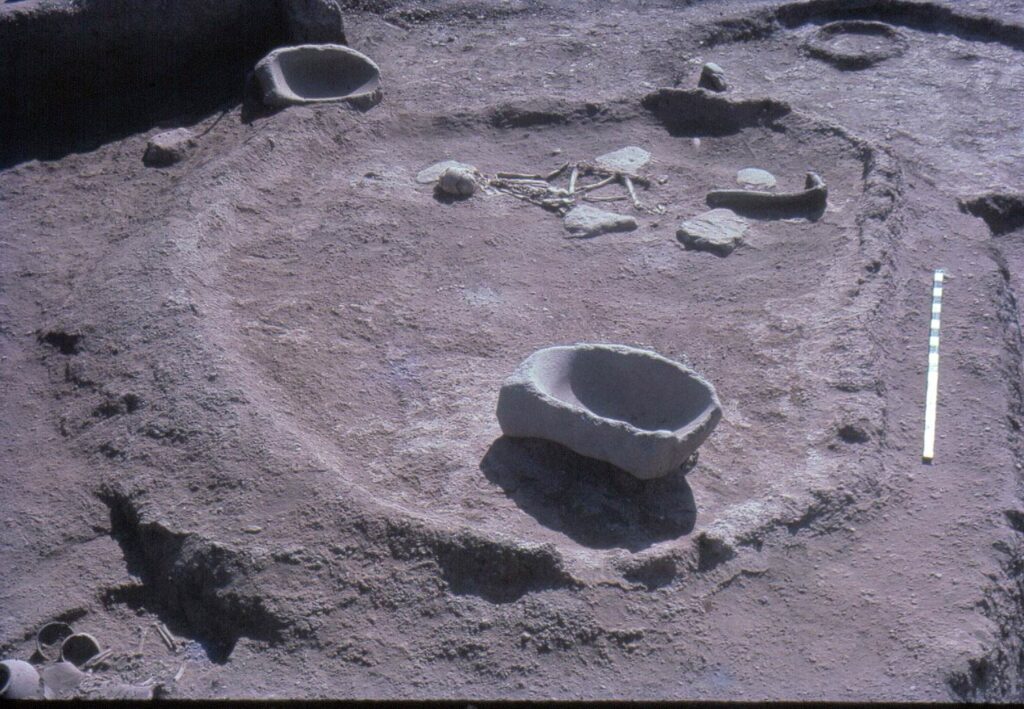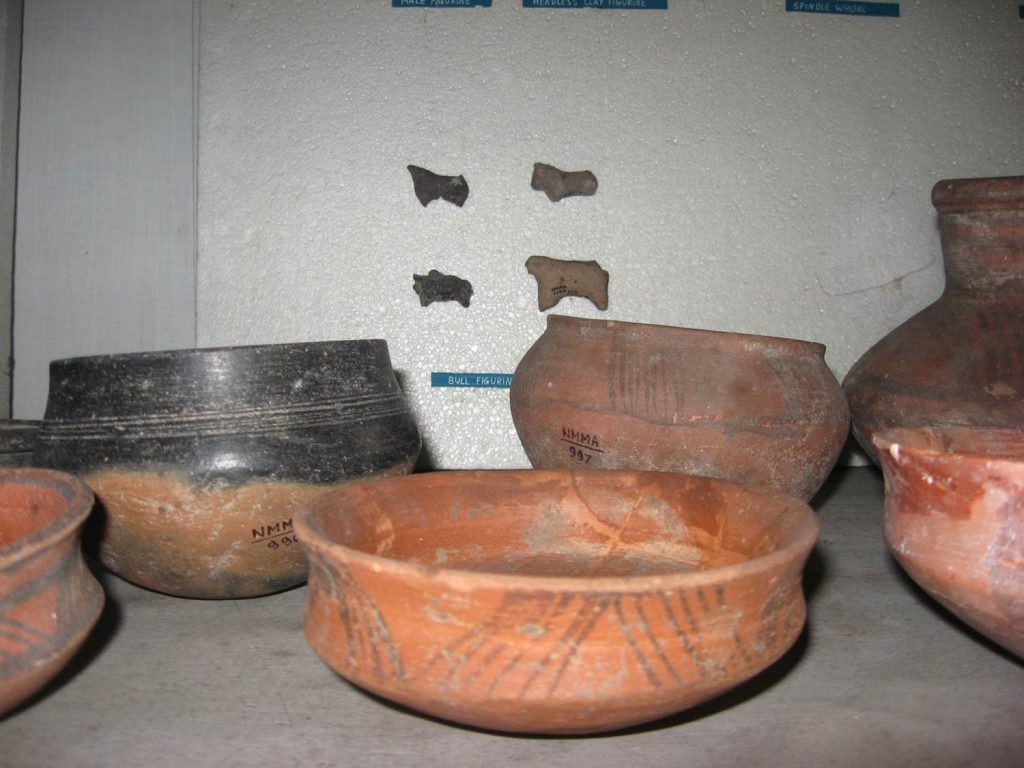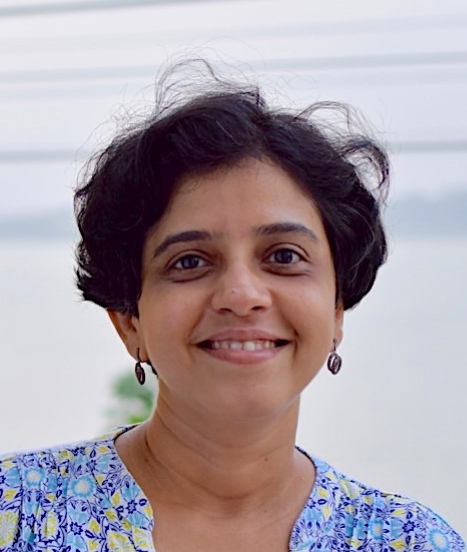The year was 1947, and the season was monsoon. India was gearing up for the historic moment of Independence, a new beginning in her history. Around the same time, a nondescript village in western Maharashtra, too, was ushering Indian history into a new phase, albeit unknowingly.
A flood of discoveries
The rains came down very hard that year, and the River Pravara flooded over its banks and the riverside villages. Jorwe, near Nashik, was one of them. To escape the wrath of the waters, the villagers moved their homes up the slope, away from the floodlines. As they started ploughing the land nearby, clay pots began to be churned out regularly from the earth. Not the usual red or black coarse pots that villagers used, but fine red pots painted beautifully in black. Nobody had seen anything like it before. The findings became famous locally, and the news reached S.A. Sali, a clerk in the taluka development board at Sangamner. He not only got it published in a local newspaper, but also took the finds to Prof. H.D. Sankalia, the doyen of post-Independence Indian archaeology.
He was intrigued enough by the discoveries. Around the same time, he was planning to excavate Nashik. Jorwe was added to the project, and a small-scale excavation was carried out alongside in 1950. The outcome of the project was sensational for Indian history. Till that time, nothing was known about how and when the prehistoric hunter-gatherers evolved into sedentary village farmers. History began with Gautam Buddha, placed tentatively in the sixth century BCE. Harappan civilisation was known to have flourished 5,000 years ago, but most of its then known sites had become part of the new Pakistan, and there was a huge knowledge gap between its end and the Buddha era. Jorwe gave the first glimpse into this enigmatic period.
Excavation yielded remains of a small village of farmers who knew only copper and stone technology (hence called chalcolithic), much before the first known dynasty of early Deccan, i.e., Satavahanas. Jorwe not only pushed back the Deccan history by 2,000 years, but also opened the floodgates of discoveries across India, with every region subsequently coming up with its own findings of chalcolithic and neolithic settlements. The discoveries haven’t yet stopped. And every time a discovery is reported, Jorwe is remembered. So, here is the story of the Jorwe residents and their times. The story of the first farmers of the Deccan.

The Deccan Chalcolithic Age
The first footsteps of prehistoric people from Deccan have been documented from seven lakh years ago. However, it was only around 2450 BCE that the first farming settlements started emerging in North Maharashtra. They initially appear to be part-hunting, part-farming villages, having learnt the farming techniques from neighbouring farming communities located in modern Gujarat. Such settlements gradually became sedentary farming villages in a few centuries, and occupied almost the whole of the western Deccan, and prospered till 900 BCE or slightly later. Till today, around 200 such villages have been recorded from all over the western Deccan, in the river valleys of Tapi, Godavari, Bhima and Krishna, as well as away from them. However, no such evidence is yet found from the coastal Konkan area. Thanks to the research by Sankalia, M.K. Dhavalikar, Z.D. Ansari, S.B. Deo, S.A. Sali, V.S. Shinde and many others who carried out excavations at more than 20 sites, we now have a detailed information about the way of life of these communities. Evidence from Inamgaon, Daimabad, Prakash, Kaothe and Walki have made substantial contribution to this corpus.
These communities existed before any cities came up in the Deccan. There seems to be an assortment of large villages, probably regional centres, small farming villages, and seasonal encampments. Daimababad, a regional centre in the Godavari valley, was the largest of these all, followed by Inamgaon in the Bhima and Prakash in the Tapi valleys. All these three villages appear to have acted as nodal centres for the smaller villages and populations in the surrounding areas. Majority of these settlements were located near fertile soils, good pastures and perennial water sources.
The villages were apparently not so different from villages today, with all the houses in aggregation in one locale. All the houses were similar in nature, having one or two rooms with courtyards, made of reeds plastered with clay and grass-thatched roofs. Floors were made of clay and plastered with cow-dung. A typical house had a hearth, grindstone, and storage facilities. Only the village chief seems to have enjoyed a bigger house with 4-5 rooms. People used clay pots of various shapes, many of them red with black paintings. Apart from big jars and cooking pots, there were lots of bowls – big and small, basins and spouted pots, apart from big clay lamps to light the houses.
Storage facilities were elaborate. These people inhabited the semi-arid Deccan with variable and occasionally failing monsoons, just like the present times. In the absence of regulated markets, monetary systems and trading mechanisms, storage was essential for survival. There were various types of storage, viz., pit-silos lined with lime, huge four-legged storage jars, as well as clay platforms for keeping wickerwork bins. These clay platforms were filled with sand and thorns to keep rodents away. At Inamgaon, a huge public granary was located just behind the chief’s house, and was probably under his control.
Though these were the first farmers of the region, who kept animals like cattle, buffalo, sheep-goat, pigs, hens, dogs and cats, they also practised hunting, gathering, and fishing. The traditional crop package of the Deccan seems to have originated with chalcolithic farmers, consisting of wheat, barley, rice, green gram (moong), black gram (urad), pigeon pea (arhar), Bengal gram (chana), lentils (masoor), pea, ragi, kulith, and sesame, among others.
Fruits such as amla, ber, dates and jamun were gathered from surroundings, along with leafy vegetables. Various deer species were hunted for their meat, along with a variety of fish and turtles, though beef was the mainstay of the diet. Although Inamgaon is located at the heart of the famine zone of the Deccan, the villagers had constructed a canal to divert flood waters from the river in the monsoons. It also enabled them to retain water after monsoons and irrigate the wheat crop. This is the earliest example of water management in the Deccan.
Apart from potters, there were artisans who had the skills of lime-making, bead-making, and copper-smelting. Such workshops, including a few complete specimens of pottery kilns, have been found from Inamgaon and Daimabad. Stone tools, which essentially included microlithic blades made from siliceous stone, were made by almost all the families. Copper, imported from the Khetri mines in Rajasthan, was used for making fish hooks, harpoons, arrows and jewellery items like bangles and beads. Beads and bangles were also fashioned out of conch shell and terracotta. Various coloured siliceous stones were used for bead-making.
Although these seem to be self-sufficient communities to a large extent, they had exchange relations with contemporary communities from the regions of Karnataka, Rajasthan, Gujarat and central India. Commodities like copper, gold, lapis lazuli, and conch shells were imported from such places. We also see that a group of later Harappan communities migrated to this area and gradually became assimilated with the local people. A large late Harappan settlement has been recorded from Daimabad, with the presence of Harappan round seals.

The practices of chalcolithic communities
Chalcolithic communities were essentially tribal and bound by their clan structures and ruled by chiefs. There were no social classes like caste system. Pre-dating any known form of religion in Indian history, their belief-system must have been tribal in nature. They made figurines of bulls and mother goddesses. There is also a depiction of a half-man, half-leopard figure on a big jar which definitely had some ‘religious’ connotation. They buried their dead within the village, often in the courtyards, but cut off the feet of the dead; either for prohibiting them from coming back to the mortal world or alternatively, for stopping them from leaving the place. Children were buried in big clay jars, making a womb-like enclosed space. All the graves had offerings placed within, indicating a belief in the ‘after-world’.
There were similar communities in western and central India, as well as Karnataka. Most of these communities gradually adapted iron technology and progressed towards urbanisation. However, Deccan has a different story to tell. Around 1200 BCE, villages in north and central Deccan were abandoned. Only a few villages in the Bhima valley survived till 900/800 BCE. The palaeo-environmental data shows that rainfall had become erratic around this time, with frequent famines becoming the new normal. In the absence of buffers like cities and supra-regional administrative system, people were forced to shift from farming to semi-nomadic pastoralism and gradually to nomadic life. Inamgaon was one of the last abandoned places. People, despite being on the move, kept coming back once a year. However, they too gradually stopped. The village was buried under the dust of time.
After a few centuries, around the third century BCE, Deccan was repopulated with villages, towns and cities. Riding on the back of iron technology and the forces of urbanisation coming from north India, the Deccan prospered once again. However, the descendants of the chalcolithic people have been lost to anonymity, they must have been assimilated in the new world, but archaeology still has no idea about the intervening centuries. Their story is yet to be completed, and the quest is still on!
(S.A. Sali, the clerk who was responsible for bringing in the experts in the initial discovery, left his job, earned a degree (and subsequently a PhD) in archaeology, and joined the ASI. He not only went on to become a famous researcher, but also ended up excavating the largest known site of the Deccan chalcolithic, viz., Daimabad!)

 [/column]
[/column]